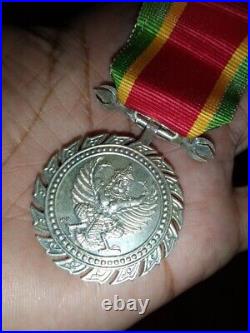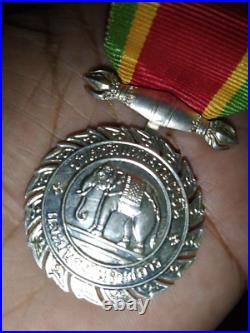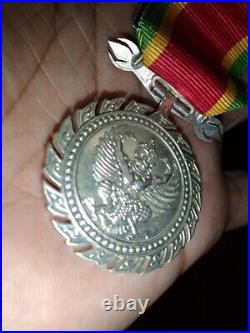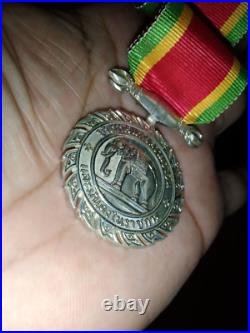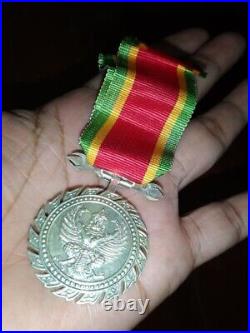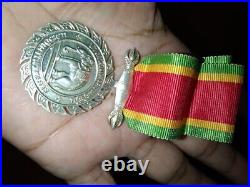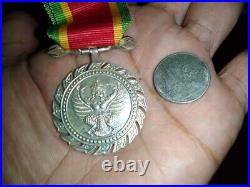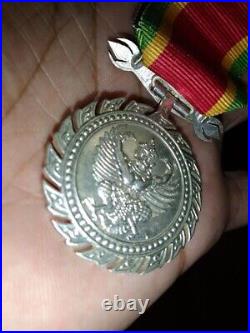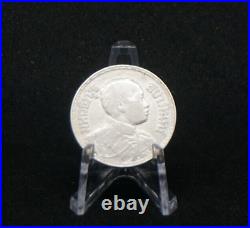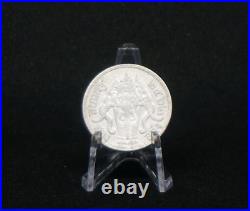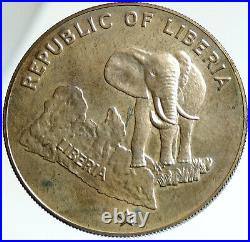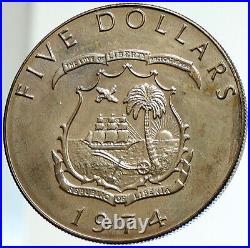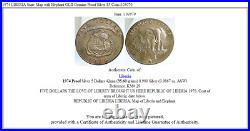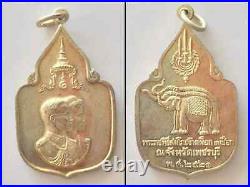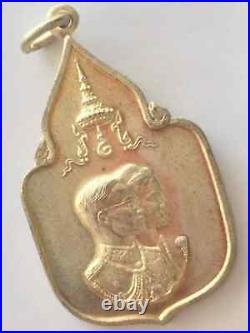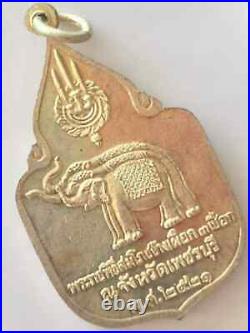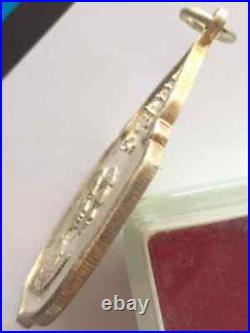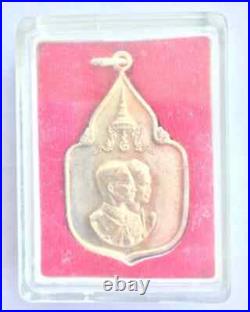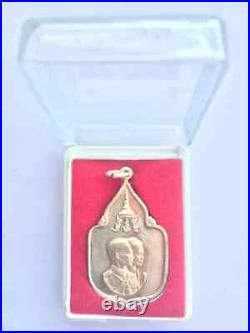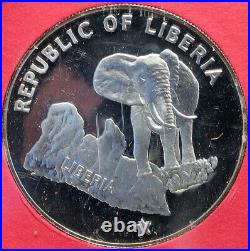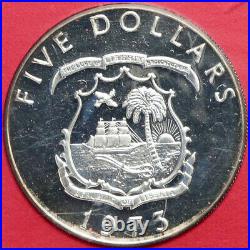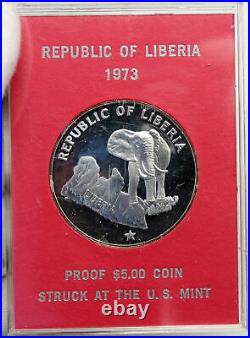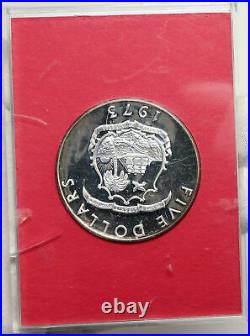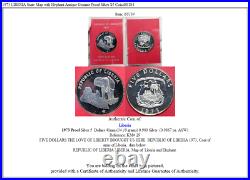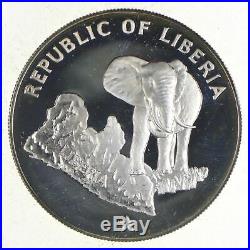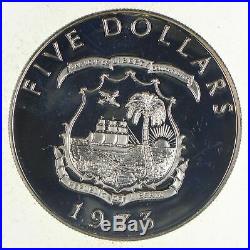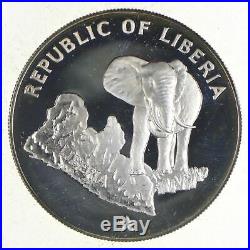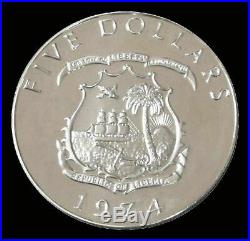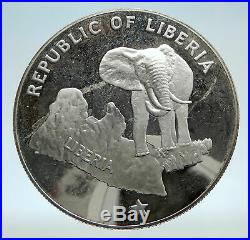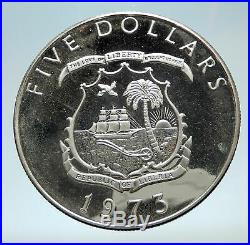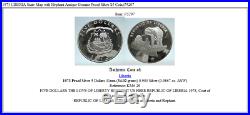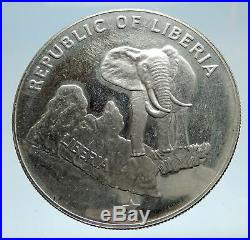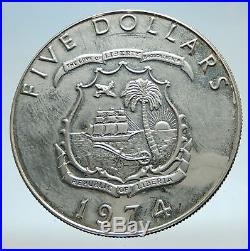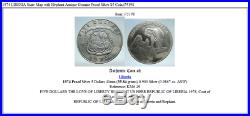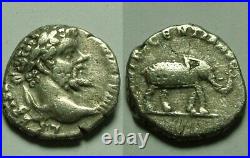
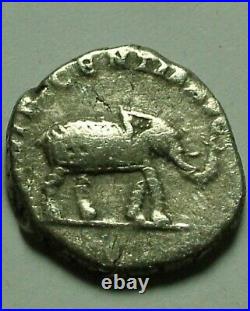
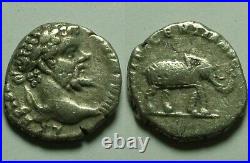
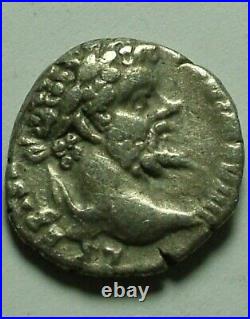

One original ancient Roman silver coin of: Septimius Severus Denarius. Struck – AD 194-195 Emesa mint. (VF) Well centered nice specimen. Original ancient Roman coin as pictured and described above. Septimius made an expedition to North Africa in AD 202, and remained there into AD 203. During this time, he led a campaign against the tribes who raided the province from the deserts to the south and east, and also undertook a number of building projects to improve both the local infrastructure as well as the overall prestige of the various cities. One of the major projects was the construction of an important aqueduct in Carthage. Dea Caelestis (“Heavenly Goddess”) was the patron goddess of Carthage, and while this issue was certainly struck in commemoration of Septimius’ general works there, the particular iconography of her riding on a lion above a stream of water flowing from a rocky source may have been chosen as a specific reference to the aqueduct. Septimius Severus (/svrs/; Latin: Lucius Septimius Severus Augustus; 11 April 145 4 February 211), also known as Severus, was Roman emperor from 193 to 211. He was born in Leptis Magna in the Roman province of Africa. As a young man he advanced through the cursus honorumthe customary succession of officesunder the reigns of Marcus Aurelius and Commodus. Severus seized power after the death of Emperor Pertinax in 193 during the Year of the Five Emperors. After deposing and killing the incumbent emperor Didius Julianus, Severus fought his rival claimants, the Roman generals Pescennius Niger and Clodius Albinus. Niger was defeated in 194 at the Battle of Issus in Cilicia. Later that year Severus waged a short punitive campaign beyond the eastern frontier, annexing the Kingdom of Osroene as a new province. Severus defeated Albinus three years later at the Battle of Lugdunum in Gaul. After consolidating his rule over the western provinces, Severus waged another brief, more successful war in the east against the Parthian Empire, sacking their capital Ctesiphon in 197 and expanding the eastern frontier to the Tigris. He then enlarged and fortified the Limes Arabicus in Arabia Petraea. In 202 he campaigned in Africa and Mauretania against the Garamantes; capturing their capital Garama and expanding the Limes Tripolitanus along the southern desert frontier of the empire. He proclaimed as Augusti (co-emperors) his elder son Caracalla in 198 and his younger son Geta in 209. In 208 he travelled to Britain, strengthening Hadrian’s Wall and reoccupying the Antonine Wall. In the same year he invaded Caledonia (modern Scotland), but his ambitions were cut short when he fell fatally ill of an infectious disease, in late 210. Severus died in early 211 at Eboracum (today York, England), and was succeeded by his sons, thus founding the Severan dynasty. It was the last dynasty of the Roman Empire before the Crisis of the Third Century. In 191 Severus was appointed governor of Pannonia Superior by Commodus on the advice of Quintus Aemilius Laetus, prefect of the Praetorian Guard. Commodus was assassinated the following year. Pertinax was acclaimed emperor, but he was then killed by the Praetorian Guard in early 193. In response to the murder of Pertinax, Severus’s legion XIV Gemina proclaimed him Emperor at Carnuntum. Nearby legions, such as X Gemina at Vindobona, soon followed. Having assembled an army, Severus hurried to Italy. Julianus was condemned to death by the Senate and killed. [26] Severus took possession of Rome without opposition. He executed Pertinax’s murderers and dismissed the rest of the Praetorian Guard, filling its ranks with loyal troops from his own legions. The legions of Syria had proclaimed Pescennius Niger emperor. At the same time Severus felt it was reasonable to offer Clodius Albinus, the powerful governor of Britannia, who had probably supported Didius against him, the rank of Caesar, which implied some claim to succession. With his rear safe, he moved to the East and crushed Niger’s forces at the Battle of Issus. While campaigning against Byzantium, he ordered that the tomb of his fellow Carthaginian Hannibal be covered with fine marble. He devoted the following year to suppressing Mesopotamia and other Parthian vassals who had backed Niger. Afterwards Severus declared his son Caracalla to be successor, which caused Albinus to be hailed emperor by his troops and to invade Gallia. After a short stay in Rome, Severus moved north to meet him. On 19 February 197 at the Battle of Lugdunum, with an army of about 75,000 men, mostly composed of Pannonian, Moesian and Dacian legions and a large number of auxiliaries, Severus defeated and killed Clodius Albinus, securing his full control over the empire. Emperor War against Parthia The Roman Empire in 210 after the conquests of Severus. Depicted is Roman territory (purple) and Roman dependencies (light purple). Aureus minted in 193 by Septimius Severus, to celebrate XIIII Gemina Martia Victrix, the legion that proclaimed him emperor. In early 197 Severus departed Rome and travelled to the east by sea. He embarked at Brundisium and probably landed at the port of Aegeae in Cilicia, travelling to Syria by land. He immediately gathered his army and crossed the Euphrates. Abgar IX, titular King of Osroene but essentially only the ruler of Edessa since the annexation of his kingdom as a Roman province, handed over his children as hostages and assisted Severus’ expedition by providing archers. Severus travelled on to Nisibis, which his general Julius Laetus had prevented from falling into enemy hands. The following year he led another, more successful, campaign against the Parthian Empire, reportedly in retaliation for the support it had given to Pescennius Niger. His legions sacked the Parthian royal city of Ctesiphon and he annexed the northern half of Mesopotamia to the empire. However, like Trajan nearly a century before, he was unable to capture the fortress of Hatra even after two lengthy sieges. During his time in the east, though, he also expanded the Limes Arabicus, building new fortifications in the Arabian Desert from Basie to Dumatha. Relations with the Senate and People Severus’ relations with the Senate were never good. Severus ordered the execution of a large number of Senators on charges of corruption or conspiracy against him and replaced them with his favourites. Although his actions turned Rome more into a military dictatorship, he was popular with the citizens of Rome, having stamped out the rampant corruption of Commodus’s reign. According to Cassius Dio, however, after 197 Severus fell heavily under the influence of his Praetorian Prefect, Gaius Fulvius Plautianus, who came to have almost total control of the imperial administration. Plautianus’s daughter, Fulvia Plautilla, was married to Severus’s son, Caracalla. Plautianus’s excessive power came to an end in 204, when he was denounced by the Emperor’s dying brother. In January 205 Caracalla accused Plautianus of plotting to kill him and Severus. The powerful prefect was executed while he was trying to defend his case in front of the two emperors. One of the two following praefecti was the famous jurist Aemilius Papinianus. Executions of senators did not stop: Cassius Dio records that many of them were put to death, some after being formally tried. Upon his arrival at Rome in 193, Severus discharged the Praetorian Guard, which had murdered Pertinax and had then auctioned the Roman Empire to Didius Julianus. Its members were stripped of their ceremonial armour and forbidden to come within 160 kilometres (99 mi) miles of the city on pain of death. Severus replaced the old guard with 10 new cohorts recruited from veterans of his Danubian legions. Around 197[49] he increased the number of legions from 30 to 33, with the introduction of the three new legions: I, II, and III Parthica. He garrisoned Legio II Parthica at Albanum, only 20 kilometres (12 mi) from Rome. He gave his soldiers a donative of a thousand sesterces (250 denarii) each, and raised the annual wage for a soldier in the legions from 300 to 400 denarii. Severus was the first Roman emperor to station some of the imperial army in Italy. He realized that Rome needed a military central reserve with the capability to be sent anywhere. Reputed persecution of Christians At the beginning of Severus’ reign, Trajan’s policy toward the Christians was still in force. That is, Christians were only to be punished if they refused to worship the emperor and the gods, but they were not to be sought out. Therefore, persecution was inconsistent, local, and sporadic. Faced with internal dissidence and external threats, Severus felt the need to promote religious harmony by promoting syncretism. He, possibly, issued an edict that punished conversion to Judaism and Christianity. A number of persecutions of Christians occurred in the Roman Empire during his reign and are traditionally attributed to Severus by the early Christian community. This is based on the decree mentioned in the Augustan History, an unreliable mix of fact and fiction. Early church historian Eusebius described Severus as a persecutor. The Christian apologist Tertullian stated that Severus was well disposed towards Christians, [60] employed a Christian as his personal physician and had personally intervened to save several high-born Christians known to him from the mob. Eusebius’ description of Severus as a persecutor likely derives merely from the fact that numerous persecutions occurred during his reign, including those known in the Roman martyrology as the martyrs of Madaura, Charalambos and Perpetua and Felicity in the Roman province of Africa. These were probably the result of local persecutions rather than empire-wide actions or decrees by Severus. Military activity Africa (202) The expansion of the African frontier during the reign of Severus (medium tan). Severus even briefly held a military presence in Garama in 203 (light tan). In late 202 Severus launched a campaign in the province of Africa. The legate of Legio III Augusta, Quintus Anicius Faustus, had been fighting against the Garamantes along the Limes Tripolitanus for five years. He captured several settlements such as Cydamus, Gholaia, Garbia, and their capital Garama over 600 kilometres (370 mi) south of Leptis Magna. [62] The province of Numidia was also enlarged: the empire annexed the settlements of Vescera, Castellum Dimmidi, Gemellae, Thabudeos and Thubunae. [63] By 203 the entire southern frontier of Roman Africa had been dramatically expanded and re-fortified. Desert nomads could no longer safely raid the region’s interior and escape back into the Sahara. Britain (208) In 208 Severus travelled to Britain with the intention of conquering Caledonia. Modern archaeological discoveries illuminate the scope and direction of his northern campaign. [64] Severus probably arrived in Britain with an army over 40,000, considering some of the camps constructed during his campaign could house this number. He strengthened Hadrian’s Wall and reconquered the Southern Uplands up to the Antonine Wall, which was also enhanced. Severus built a 165-acre (67 ha) camp south of the Antonine Wall at Trimontium, probably assembling his forces there. Severus then thrust north with his army across the wall into Caledonian territory. Retracing the steps of Agricola of over a century before, Severus rebuilt and garrisoned many abandoned Roman forts along the east coast, such as Carpow. He was supported and supplied by a strong naval force. Kushan ring with portraits of Septimus Severus and Julia Domna, a testimony to Indo-Roman relations of the period. Around this time Severus’ wife, Julia Domna, reportedly criticised the sexual morals of the Caledonian women. The wife of Caledonian chief Argentocoxos replied: “We fulfill the demands of nature in a much better way than do you Roman women; for we consort openly with the best men, whereas you let yourselves be debauched in secret by the vilest”. Cassius Dio’s account of the invasion reads: Severus, accordingly, desiring to subjugate the whole of it, invaded Caledonia. But as he advanced through the country he experienced countless hardships in cutting down the forests, levelling the heights, filling up the swamps, and bridging the rivers; but he fought no battle and beheld no enemy in battle array. The enemy purposely put sheep and cattle in front of the soldiers for them to seize, in order that they might be lured on still further until they were worn out; for in fact the water caused great suffering to the Romans, and when they became scattered, they would be attacked. Then, unable to walk, they would be slain by their own men, in order to avoid capture, so that a full fifty thousand died. But Severus did not desist until he approached the extremity of the island. Here he observed most accurately the variation of the sun’s motion and the length of the days and the nights in summer and winter respectively. By 210 Severus’ campaigning had made significant gains, despite Caledonian guerrilla tactics and purportedly heavy Roman casualties. The Caledonians sued for peace, which Severus granted on condition they relinquish control of the Central Lowlands. This is evidenced by extensive Severan-era fortifications in the Central Lowlands. The Caledonians, short on supplies and feeling that their position was desperate, revolted later that year with the Maeatae. Severus prepared for another protracted campaign within Caledonia. He was now intent on exterminating the Caledonians, telling his soldiers: Let no-one escape sheer destruction, no-one our hands, not even the babe in the womb of the mother, if it be male; let it nevertheless not escape sheer destruction. Death (211) Severus’ campaign was cut short when he fell ill. He withdrew to Eboracum (York) and died there in 211. Although his son Caracalla continued campaigning the following year, he soon settled for peace. The Romans never campaigned deep into Caledonia again. Shortly after this the frontier was permanently withdrawn south to Hadrian’s Wall. Severus is famously said to have given the advice to his sons: “Be harmonious, enrich the soldiers, scorn all others” before he died on 4 February 211. On his death, Severus was deified by the Senate and succeeded by his sons, Caracalla and Geta, who were advised by his wife Julia Domna. Severus was buried in the Mausoleum of Hadrian in Rome. His remains are now lost. Assessment and legacy The Arch of Septimius Severus at Leptis Magna Though his military expenditure was costly to the empire, Severus was a strong and able ruler. The Roman Empire reached its greatest extent under his reign over 5 million square kilometres. According to Gibbon, his daring ambition was never diverted from its steady course by the allurements of pleasure, the apprehension of danger, or the feelings of humanity. His enlargement of the Limes Tripolitanus secured Africa, the agricultural base of the empire where he was born. His victory over the Parthian Empire was for a time decisive, securing Nisibis and Singara for the empire and establishing a status quo of Roman dominance in the region until 251. The large and ongoing increase in military expenditure caused problems for all of his successors. To maintain his enlarged military, he debased the Roman currency. Upon his accession he decreased the silver purity of the denarius from 81.5% to 78.5%, although the silver weight actually increased, rising from 2.40 grams to 2.46 grams. Nevertheless, the following year he debased the denarius again because of rising military expenditures. The silver purity decreased from 78.5% to 64.5% the silver weight dropping from 2.46 grams to 1.98 grams. In 196 he reduced the purity and silver weight of the denarius again, to 54% and 1.82 grams respectively. [88] Severus’ currency debasement was the largest since the reign of Nero, compromising the long-term strength of the economy. Severus was also distinguished for his buildings. Apart from the triumphal arch in the Roman Forum carrying his full name, he also built the Septizodium in Rome. He enriched his native city of Leptis Magna, including commissioning a triumphal arch on the occasion of his visit of 203. The greater part of the Flavian Palace overlooking the Circus Maximus was undertaken in his reign. All items will be sent out in protected envelope and boxed if necessary. Every item offered by cameleoncoins is unconditionally guaranteed to be genuine & authentic. If in the unlikely event that an item is found to be reproduction, full return privileges are within 14 days of receiving the coins. The item “Genuine ancient Roman silver coin Septimius Severus denarius Elephant” is in sale since Saturday, November 7, 2020. This item is in the category “Coins & Paper Money\Coins\ Ancient\Roman\ Imperial (27 BC-476 AD)”. The seller is “cameleoncoins” and is located in Sherman Oaks, California. This item can be shipped worldwide.
- Date: 194
- Material: silver
- Composition: Silver
- Ruler: Septimius Severus
- Historical Period: Roman: Imperial (27 BC-476 AD)
- Denomination: Denarius
- Era: Ancient

